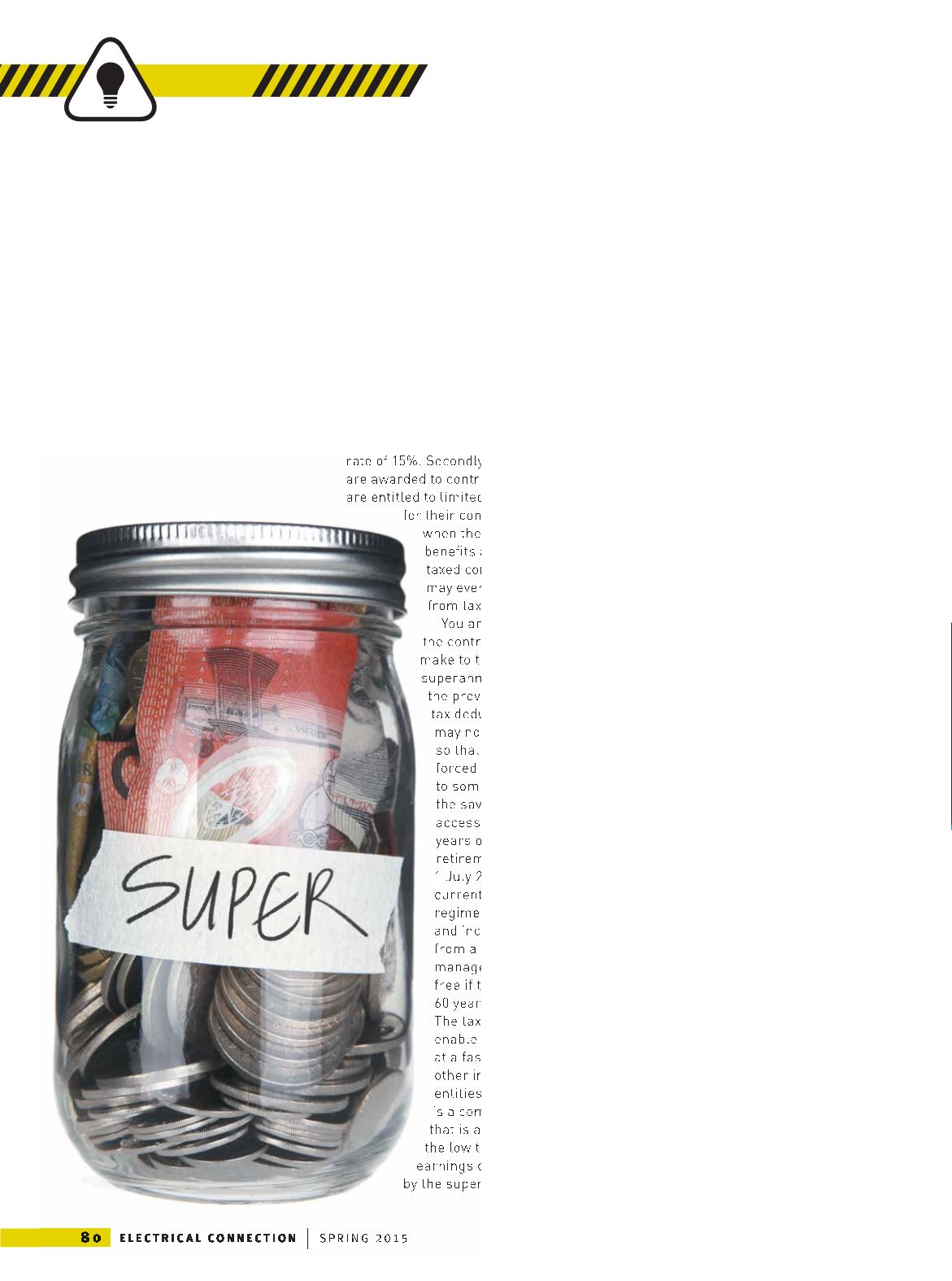

8 0
E L E C T R I C A L CO N N E C T I O N
S P R I N G 2 0 15
TIPS
S
ubject to strict, legally
enforceable rules and sanctions,
a self-managed superannuation
fund provides a facility that is assisted
by tax concessions to accumulate
wealth, which is locked away for
retirement or death.
There are tax concessions that
apply in three main ways. A complying
self-managed superannuation fund
will generally pay tax at the special
rate of 15%. Secondly, tax concessions
are awarded to contributors in that they
are entitled to limited tax deductions
for their contributions. Thirdly,
when the superannuation
benefits are paid they are
taxed concessionally or
may even be exempt
from tax.
You are rewarded for
the contributions that you
make to the self-managed
superannuation fund by
the provision of a capped
tax deduction. The funds
may not be accessed
so that it is a form of
forced saving. Subject
to some exceptions,
the savings cannot be
accessed until after 60
years of age and upon
retirement. But from
1 July 2007, under the
current superannuation
regime, most lump sums
and income streams paid
from a complying self-
managed fund will be tax
free if the recipient is
60 years of age or more.
The tax concessions
enable accumulation
at a faster rate than
other investment
entities because there
is a compounding effect
that is achieved with
the low tax applicable to
earnings on investments
by the superannuation fund.
It is a tax shelter. The tax concessions
have been provided as a matter of
government policy to individuals
so that they will provide for their
retirement and so it has the effect
of moving a significant part of the
population from reliance on the old
age pension by self-funding a pension
and so relieving the government of
that burden.
A self-managed superannuation
fund is relatively cheap to establish.
It tends to be cost efficient if there is
at least $300,000 to $400,000 in the
fund. The annual costs of both audit and
accounting need to be factored into the
cost benefit analysis.
It is because the tax concessions
have been so favourable and do tend to
favour high income earners that the tax
concessions available to self-managed
superannuation funds have been the
subject of constant annual changes,
periodical re-writes of the entire
superannuation regime and political
debate. More recently, the Australian
Labor Party (ALP) has indicated
that if it is elected to government
it will remove the tax concessions
for some parts of the population. It
proposes to amend the tax law so
that income over $75,000 from a
retiree’s superannuation fund balance
will be taxed at 15% rather than the
current zero rating. This would cover
approximately 60,000 superannuation
accounts with balances over $1.5
million. Secondly, the ALP proposes
that the tax on concessional
contributions would rise from 15% to
30% for member contributors earning
$250,000 or more (which is down
from the current $300,000 threshold).
So what is all the fuss about, and
if it so good, is a self-managed
superannuation fund something that
you should be using?
WHAT ARE THE TAXATION BENEFITS?
The current superannuation regime
commenced after substantial reform on
1 July 2007. The rules remain complex
GOING IT ALONE
How does the use of a
self-managed superannuation
fund assist with wealth
planning? Gadens partner
David Coombes
investigates.
















